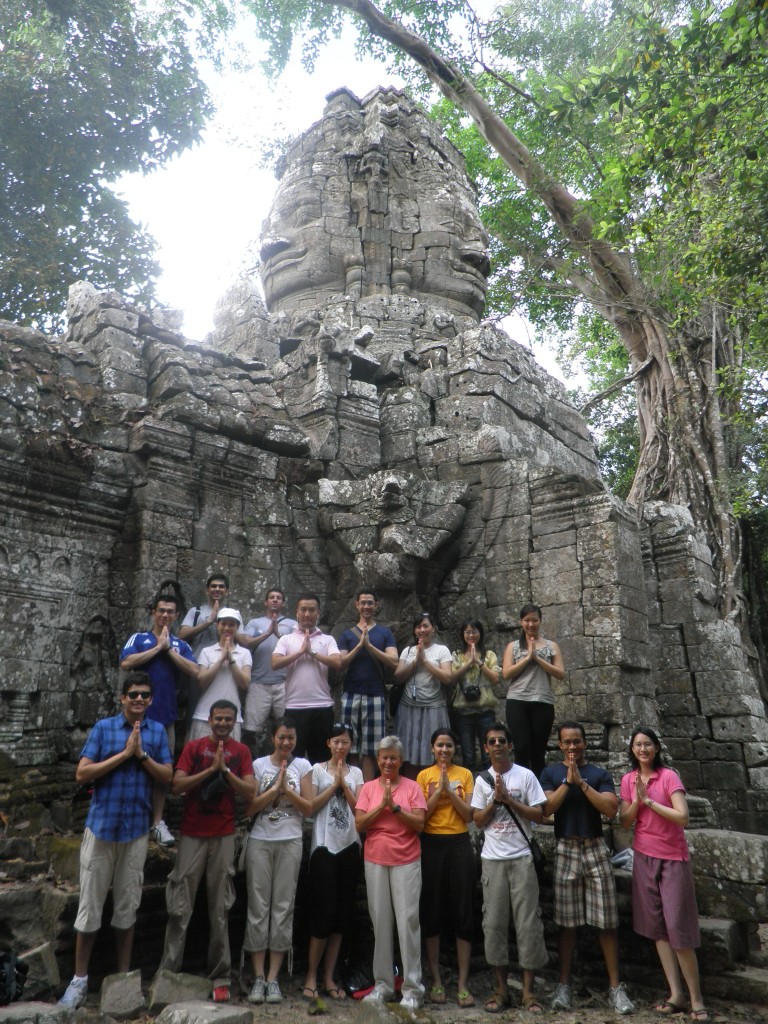Day 2 – The excitement begins with our visit to the places Siem Reap is known for the Ta Prohm and Angkor Vat.
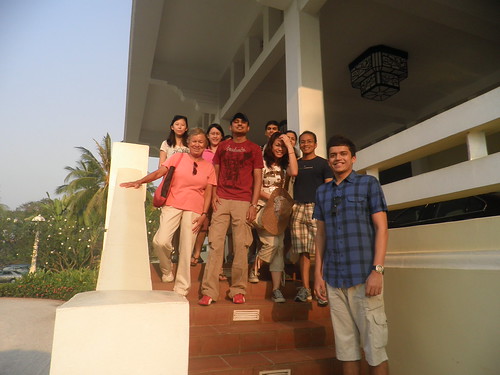

Ta Prohm is one of Cambodia’s most impressive of all the and was one of the most important temples in Jayavarman VII’s huge ambition to build a massive temple complex within Angkor. It was actually not only a temple but a monastery also, with 12,640 people living within. Its size was much greater than this though, being a city in its own right once upon a time. The outer wall measures 1km by 650 meters, and almost 80,000 people lived outside of the city wall in the surroundings of the temple.
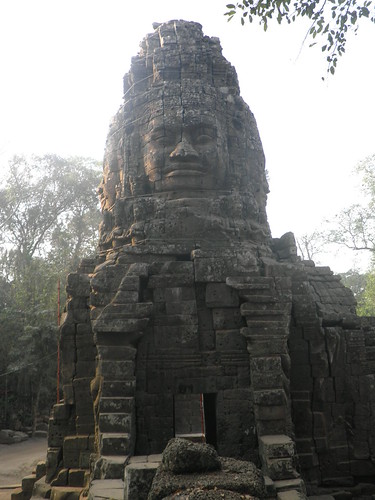
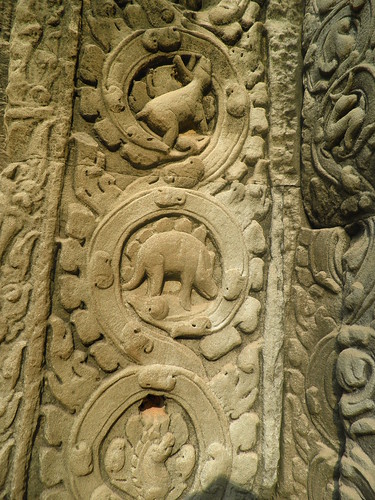
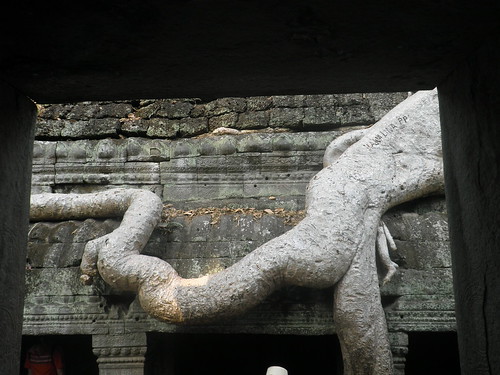
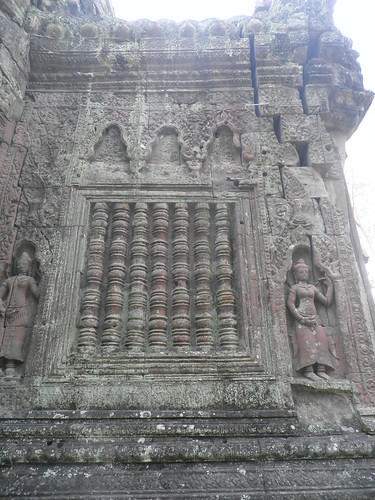
 If your eyes, you can imagine life in the Angkor kingdom within Ta Prohm unfolding before your eyes. The unique and special beauty of Ta Prohm is its decadence, its apparent lack of care, its having been forgotten and left to the elements. The temple was actually selected to be ‘preserved’ and not restored, in order to maintain its original credentials and show how it would have looked when discovered back in the 19th century, so this is in effect intentional to a certain degree. Whether or not it was foreseen, the beauty and mystical ambience of Ta Prohm is enhanced by the interwreathing of nature around these ancient structures. Silk cotton trees and strangler figs have laid claim to the site, the arteries of which weave through the bricks and foundations. In the short term they offer strength to the buildings, but unfortunately they are only temporary support, as once they perish the bricks or stones they support collapse around them. For those film buffs amongst you, this is where Tomb Raider was filmed, due to its outstanding aesthetic. The temple is large and quite tricky to navigate, and you may have your path blocked by intruding goats or cows from the nearby villages. At each of the four cardinal points there are gopuras to enter the temple. Giant carved heads like those found at the Bayon or entrances to Angkor Thom still exist, but most have completely collapsed now, however some very ornate carvings of Dvarapala remain in places. Gopura IV is a very interesting entrance due to its long double pillars and tall bas-reliefs with depictions of Buddha’s life. In order to follow a congruent path through the temple however the east gopura would be the best through which to enter. Nearby are the remains of a ‘house of fire’ or ‘Dharmasala’, a rest house for pilgrims, similar to that of Preah Khan. Once through the east gopura, nearby can be found the Hall of Dancers – a large courtyard used for shows of dancing and decorated with apsara sculptures. In the inner enclosure are some intricate devatas adorning the gallery walls, and within the enclosure are projecting porches which will take you from one side of the compact central sanctuary to the other. There is also a wonderful pediment depicting the ‘Great Departure’, or a depiction of the moment in Buddha’s life when he leaves the city, and other divinities grasp his horse’s feet, presumably to silence the sound of their feet. On gopura three, there is even a carving of a stegosaur, however there is no historical evidence that this was neither a Buddhist nor Hindu symbol.
If your eyes, you can imagine life in the Angkor kingdom within Ta Prohm unfolding before your eyes. The unique and special beauty of Ta Prohm is its decadence, its apparent lack of care, its having been forgotten and left to the elements. The temple was actually selected to be ‘preserved’ and not restored, in order to maintain its original credentials and show how it would have looked when discovered back in the 19th century, so this is in effect intentional to a certain degree. Whether or not it was foreseen, the beauty and mystical ambience of Ta Prohm is enhanced by the interwreathing of nature around these ancient structures. Silk cotton trees and strangler figs have laid claim to the site, the arteries of which weave through the bricks and foundations. In the short term they offer strength to the buildings, but unfortunately they are only temporary support, as once they perish the bricks or stones they support collapse around them. For those film buffs amongst you, this is where Tomb Raider was filmed, due to its outstanding aesthetic. The temple is large and quite tricky to navigate, and you may have your path blocked by intruding goats or cows from the nearby villages. At each of the four cardinal points there are gopuras to enter the temple. Giant carved heads like those found at the Bayon or entrances to Angkor Thom still exist, but most have completely collapsed now, however some very ornate carvings of Dvarapala remain in places. Gopura IV is a very interesting entrance due to its long double pillars and tall bas-reliefs with depictions of Buddha’s life. In order to follow a congruent path through the temple however the east gopura would be the best through which to enter. Nearby are the remains of a ‘house of fire’ or ‘Dharmasala’, a rest house for pilgrims, similar to that of Preah Khan. Once through the east gopura, nearby can be found the Hall of Dancers – a large courtyard used for shows of dancing and decorated with apsara sculptures. In the inner enclosure are some intricate devatas adorning the gallery walls, and within the enclosure are projecting porches which will take you from one side of the compact central sanctuary to the other. There is also a wonderful pediment depicting the ‘Great Departure’, or a depiction of the moment in Buddha’s life when he leaves the city, and other divinities grasp his horse’s feet, presumably to silence the sound of their feet. On gopura three, there is even a carving of a stegosaur, however there is no historical evidence that this was neither a Buddhist nor Hindu symbol. 

The Great Angkor Vat – Since the publicized in the mid 19th century, it has been described as the largest religious building in the world. The temple is located just over 6km from Siem Reap, is the centrepiece of the Angkor Archaeological Park, and has been UNESCO listed as a world heritage site since 1992.

East Side
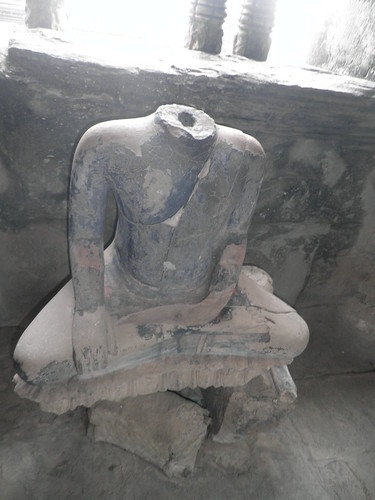
The head of Buddha stolen by robbers
One of the largest Angkor temples, Angkor Wat was built under King Suryavarman II in the early 12th century. Originally built as a temple to Vishnu, it has been in continuous use as a Buddhist shrine since the adoption of Theravada Buddhism by the Khmer people, meaning it has remained in excellent condition over the centuries. Because of its symbolic representation of ancient Khmer nationhood, the temple survived the Khmer Rouge years relatively undamaged, and tourist numbers have increased steadily since the political situation stabilised.
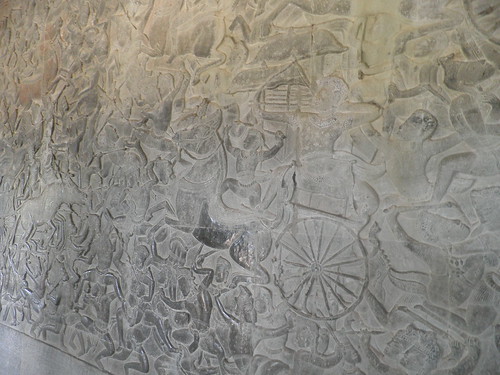
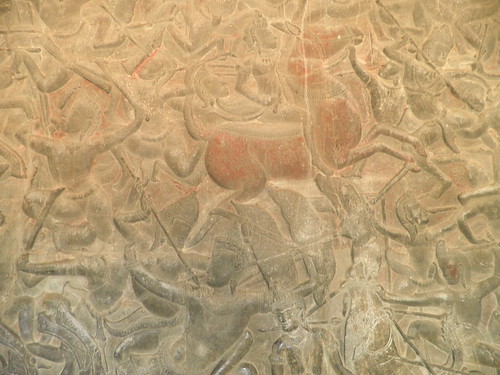
Courtesy – http://www.aboutasiatravel.com/cambodia/guide/angkor-temple/angkor-wat/angkor-wat.htm
Sachin & Manish
For more pictures please use this link : http://www.flickr.com/photos/60511747@N08/with/5514589721/

